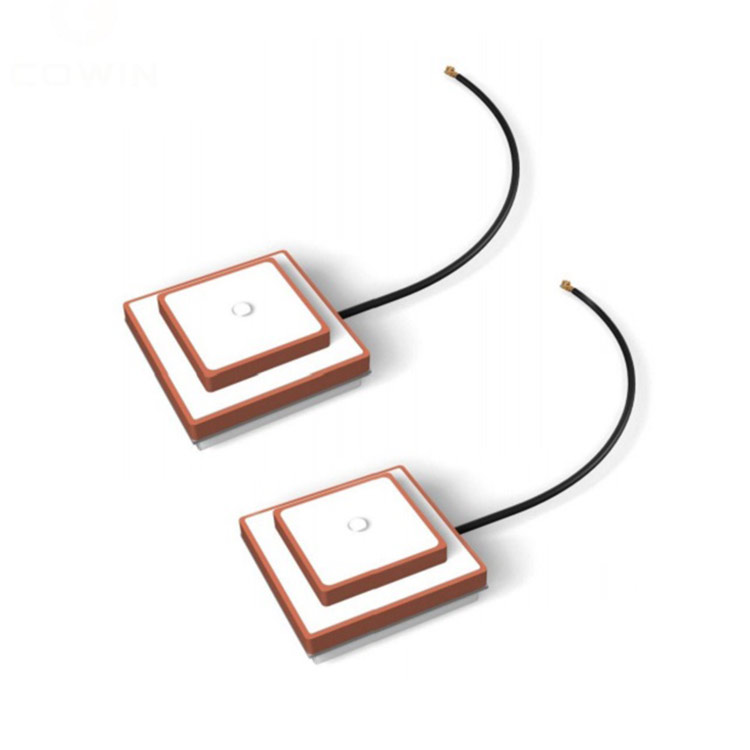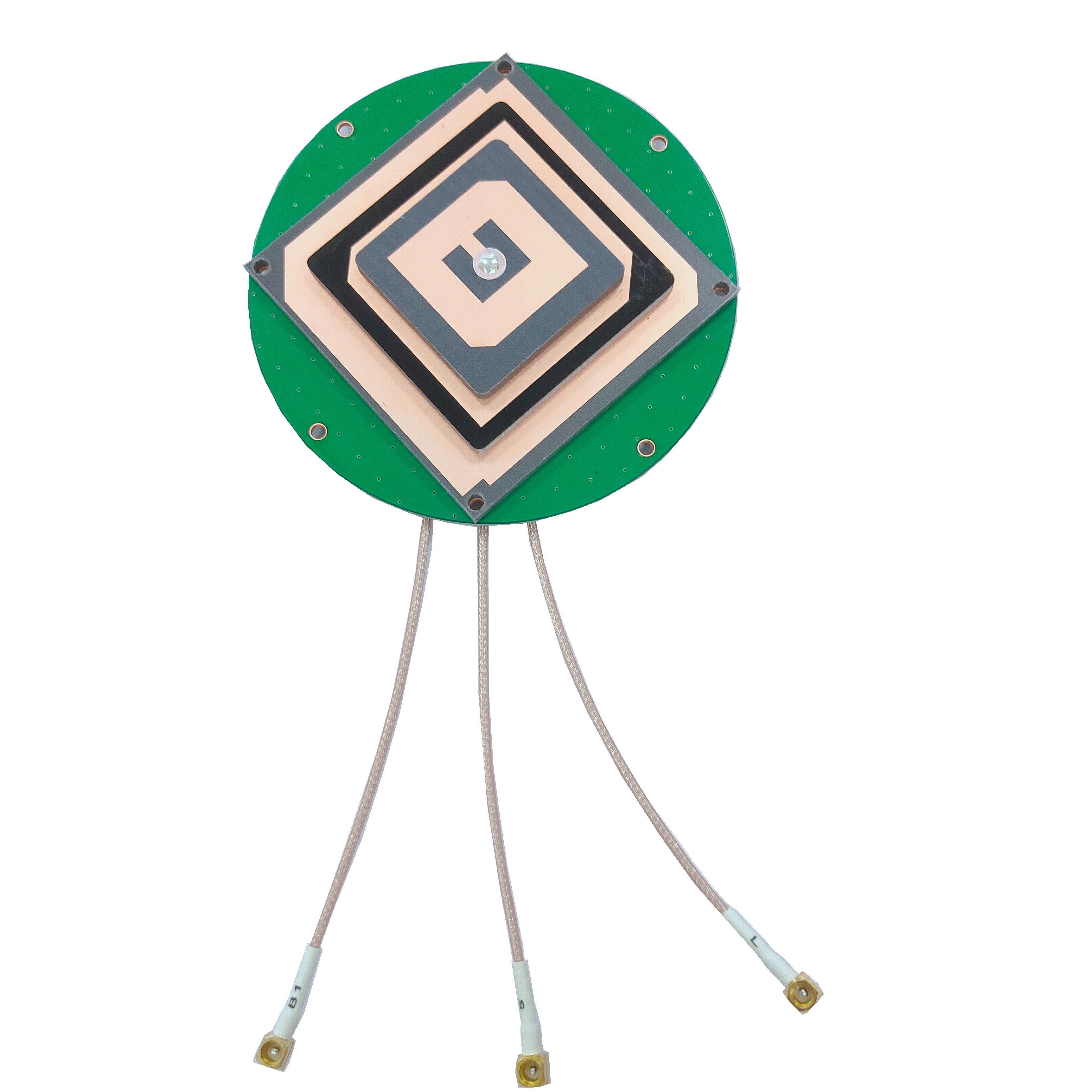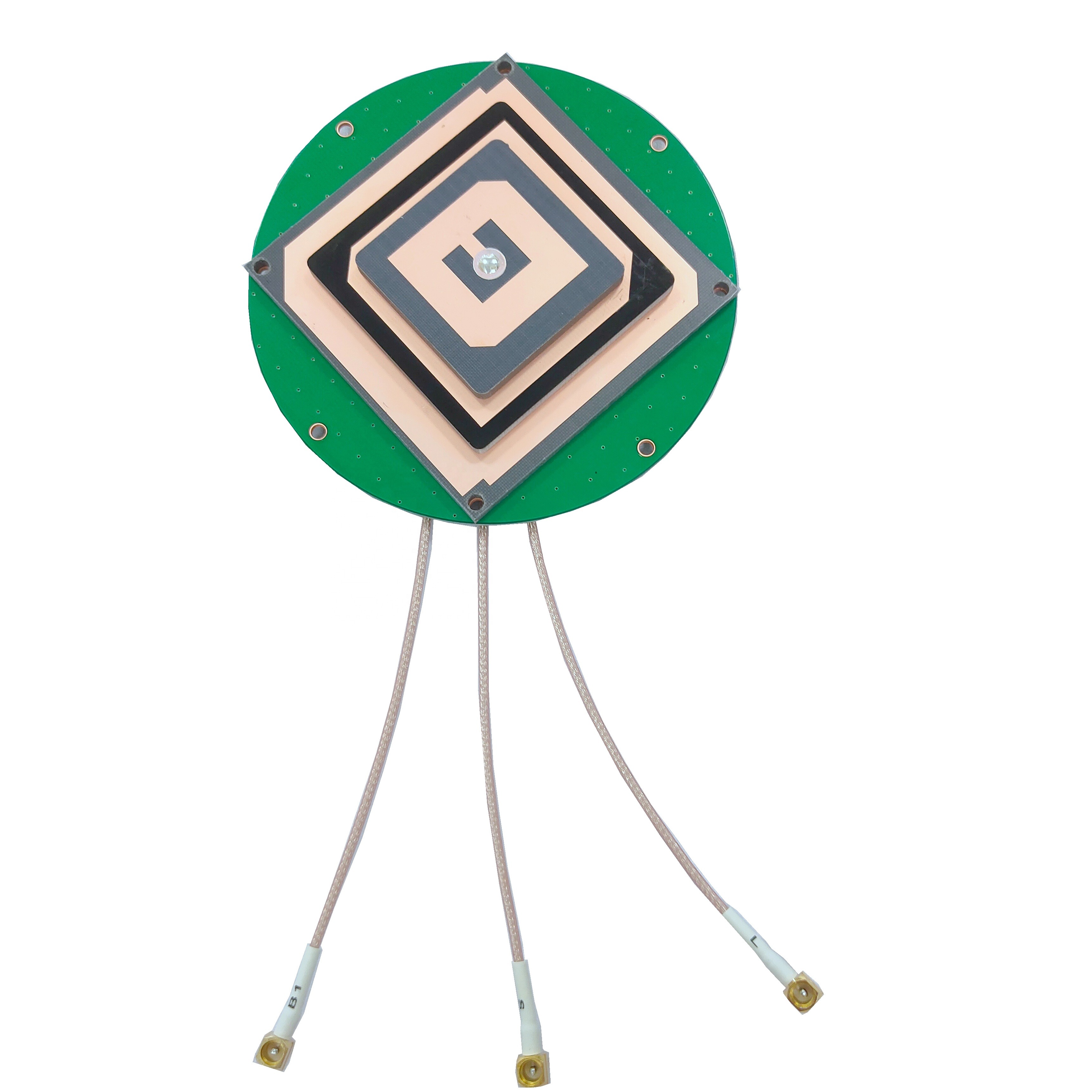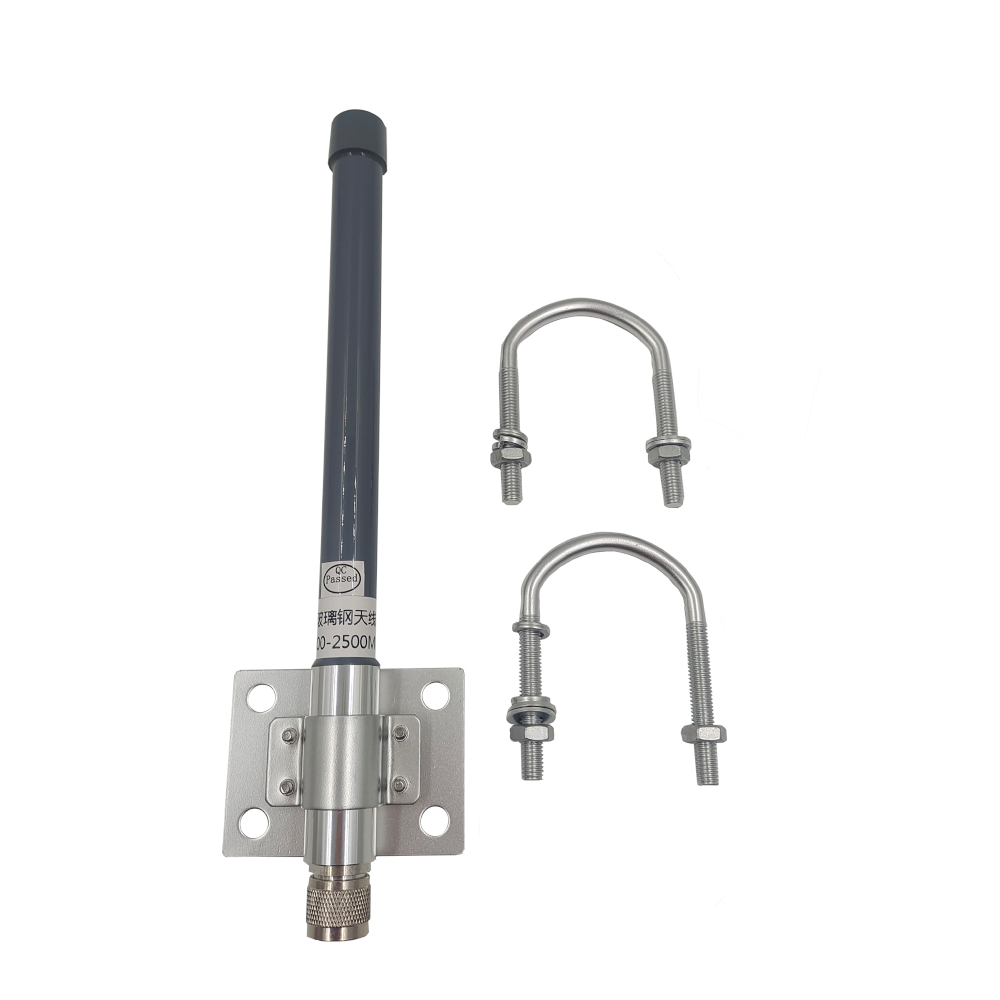overview
The term "embedded" refers to the antenna’s physical and electrical integration within the surveying device. This design approach ensures that the antenna is perfectly aligned with the instrument’s reference point (such as the optical center of a total station), minimizing phase center variations and mechanical offsets that could introduce measurement errors. These antennas are specifically tuned to receive signals from multiple GNSS constellations, including GPS (USA), GLONASS (Russia), Galileo (EU), BeiDou (China), and regional systems like QZSS and NavIC, allowing for improved satellite visibility, faster convergence times, and enhanced positional accuracy.
Embedded GNSS antennas are engineered to operate in the L-band frequency spectrum, typically receiving signals in the L1 (1575.42 MHz), L2 (1227.60 MHz), and increasingly L5 (1176.45 MHz) bands. Dual-frequency and multi-frequency reception is essential for high-precision applications, as it enables the correction of ionospheric delays—a major source of error in GNSS positioning. The ability to process signals from multiple frequencies and constellations allows survey-grade embedded antennas to achieve centimeter-level or even millimeter-level accuracy when used with Real-Time Kinematic (RTK) or Precise Point Positioning (PPP) techniques.
The demand for embedded GNSS antennas in surveying instruments has grown significantly with the rise of integrated surveying solutions. Modern surveying equipment often combines traditional optical measurement with GNSS positioning, enabling users to switch seamlessly between methods depending on site conditions. For example, in obstructed environments where satellite signals are weak, a total station can rely on its optical system, while in open areas, the embedded GNSS antenna provides rapid, accurate positioning without the need for additional setup or external hardware.
Moreover, the integration of GNSS into surveying instruments enhances operational efficiency. Surveyors can perform tasks such as stakeout, boundary marking, and topographic mapping with greater speed and reduced setup time. The embedded design also improves durability and portability, as there are no external cables or connectors that could be damaged during transport or field use. This makes the instruments more user-friendly and suitable for harsh outdoor environments.
As the accuracy requirements in construction, land management, and infrastructure development continue to rise, the role of the embedded GNSS antenna becomes increasingly vital. It represents a convergence of advanced RF engineering, precision mechanics, and geospatial science, enabling professionals to achieve reliable, repeatable, and highly accurate measurements. With ongoing advancements in satellite technology and signal processing, embedded GNSS antennas are poised to become even more capable, supporting the next generation of smart, connected, and autonomous surveying systems.
Design and Construction
The design and construction of an embedded GNSS antenna for surveying instruments involve a multidisciplinary approach that combines electromagnetic engineering, mechanical design, and material science to achieve optimal performance in a constrained physical space. Unlike general-purpose or external GNSS antennas, embedded variants must meet stringent requirements for precision, stability, and environmental resilience while fitting seamlessly within the compact and often complex housing of a surveying instrument.
At the core of the antenna is the radiating element, typically a patch antenna or a stacked patch configuration. Patch antennas are favored for their low profile, directional radiation pattern, and excellent phase center stability—critical factors for survey-grade accuracy. A common design is the dual-frequency stacked patch, where two radiating layers are vertically aligned to receive both L1 and L2 (or L5) signals. The top patch is tuned to the higher frequency (e.g., L1), while the lower patch is optimized for the lower band (e.g., L2), allowing simultaneous multi-frequency operation.
These patches are usually fabricated on high-dielectric, low-loss substrate materials such as Rogers RO4000 series or ceramic-filled PTFE, which provide excellent signal integrity and thermal stability. The conductive layers are made from copper or silver, often with gold plating to prevent oxidation and ensure long-term reliability. The antenna is fed using a coaxial probe or microstrip line, with impedance matching networks designed to maintain a 50-ohm characteristic impedance across all operating bands.
A critical aspect of the design is the ground plane. In embedded antennas, the ground plane is not only essential for antenna performance but also serves as a reference surface for the instrument’s mechanical and electrical systems. It is typically a large, continuous metal layer beneath the patch, carefully sized and shaped to minimize edge diffraction and multipath interference. The ground plane also helps shield the antenna from noise generated by internal electronics such as processors, motors, and power supplies.
To ensure phase center stability—a key metric in high-precision GNSS—the antenna is designed with a symmetrical structure and consistent material properties. The phase center, the effective point from which signals are received, must remain fixed relative to the instrument’s measurement reference point. Any variation due to satellite elevation or azimuth can introduce errors, so advanced modeling and calibration techniques are used to minimize phase center variations (PCV).
Mechanical integration is another crucial consideration. The antenna is mounted in a fixed position within the instrument housing, often aligned with the vertical axis and optical center. It is secured using non-conductive, vibration-resistant materials to prevent movement during transport or operation. The housing itself is made from durable, weather-resistant polymers or composites that do not interfere with RF signals.
Environmental protection is built into the design through conformal coatings, sealed enclosures, and EMI shielding. The antenna must operate reliably in extreme temperatures (-40°C to +85°C), high humidity, and exposure to dust and water. IP67 or higher ingress protection ratings are common, ensuring that the embedded system remains functional even in adverse conditions.
Modern embedded GNSS antennas may also include active components such as low-noise amplifiers (LNAs) and filtering circuits mounted directly on the antenna board. These components boost weak signals and suppress out-of-band interference, improving signal-to-noise ratio and overall reception quality. The integration of such electronics requires careful layout to avoid self-interference and thermal drift.
In summary, the construction of an embedded GNSS antenna is a precision engineering task that balances RF performance, mechanical integration, and environmental durability. The result is a compact, high-performance antenna that enables surveying instruments to deliver accurate, reliable, and repeatable measurements in real-world conditions.
Working Principles
The working principles of an embedded GNSS antenna in surveying instruments revolve around the precise reception and processing of satellite signals to determine position with high accuracy. Unlike consumer-grade GNSS devices, surveying instruments require centimeter- or millimeter-level precision, which demands a sophisticated understanding of signal propagation, phase measurement, and error correction—all of which begin at the antenna.
When GNSS satellites transmit navigation signals, they emit radio waves in the L-band frequency range. The embedded antenna captures these signals using its radiating element, typically a patch antenna designed for optimal gain and phase stability in the direction of the sky. The electromagnetic waves induce small electrical currents in the antenna’s conductive surface, which are then transmitted as RF signals through a feed line to the instrument’s GNSS receiver module.
One of the key principles in high-precision GNSS is carrier phase measurement. While consumer devices rely primarily on code-based positioning (using the C/A or P code), surveying instruments use the phase of the carrier wave itself to determine distance to the satellite. This method is far more accurate but requires a stable and well-characterized antenna. The embedded antenna’s phase center must remain consistent across different satellite elevations and azimuths to avoid introducing measurement bias.
To mitigate atmospheric errors, especially ionospheric delay, the embedded antenna is designed to receive signals on multiple frequencies (e.g., L1 and L2). Since the ionosphere affects different frequencies in a predictable way, the receiver can use the difference in signal travel times to calculate and correct for this delay. This dual-frequency capability is a cornerstone of Real-Time Kinematic (RTK) and PPP techniques, which are standard in surveying.
Another critical principle is multipath rejection. Multipath occurs when satellite signals reflect off surfaces like the ground, buildings, or the instrument itself before reaching the antenna, causing interference and positioning errors. Embedded GNSS antennas are designed with controlled radiation patterns that minimize sensitivity to signals coming from below the horizon. The ground plane acts as a reflector, enhancing skyward gain while suppressing ground reflections. Advanced antenna designs may also incorporate choke rings or electromagnetic bandgap (EBG) structures to further reduce multipath.
The embedded nature of the antenna ensures a fixed and known geometric relationship between the antenna’s phase center and the instrument’s optical or mechanical reference point. This eliminates the need for field calibration of antenna offsets and ensures that GNSS-derived positions are directly aligned with measurements taken by the instrument’s optical system.
Signal processing begins at the antenna interface, where low-noise amplifiers (LNAs) boost the weak incoming signals before they travel through lossy cables or circuitry. Filtering circuits remove out-of-band interference from sources such as cellular networks, Wi-Fi, or radar, preserving signal integrity. The processed signals are then digitized and fed into the GNSS engine, which computes position using data from multiple satellites and correction services (e.g., CORS, SBAS, or NTRIP).
In summary, the embedded GNSS antenna functions as a precision transducer, converting electromagnetic waves into electrical signals with minimal distortion and maximum fidelity. Its design and integration are optimized to support the advanced positioning algorithms that define modern surveying, making it an indispensable component in achieving high-accuracy geospatial measurements.
Advantages and Challenges
-
Embedded GNSS antennas offer numerous advantages that make them ideal for high-precision surveying instruments, but they also present unique engineering and operational challenges.
One of the primary advantages is mechanical and electrical integration. By embedding the antenna within the instrument, manufacturers ensure a fixed, calibrated relationship between the GNSS phase center and the optical reference point. This eliminates user error in antenna setup and reduces the need for field calibration, leading to faster deployment and higher measurement consistency.
Another major benefit is compactness and portability. Without external cables or protruding antennas, surveying instruments are more streamlined, easier to transport, and less prone to damage. This is especially important in rugged environments where loose components could be broken or snagged.
Improved reliability and durability are also significant advantages. Embedded antennas are protected within the instrument’s housing, shielded from moisture, dust, and physical impact. Sealed enclosures and conformal coatings further enhance longevity, ensuring stable performance over years of field use.
From a performance standpoint, embedded antennas are optimized for phase center stability and multipath rejection. Their design, including ground plane integration and controlled radiation patterns, minimizes measurement errors caused by signal reflections or phase variations. This is critical for achieving the centimeter-level accuracy required in professional surveying.
Additionally, embedded designs support multi-constellation and multi-frequency operation, enabling faster satellite acquisition, better sky coverage, and improved accuracy in challenging environments such as urban canyons or forested areas.
However, these advantages come with challenges. One major limitation is design inflexibility. Once embedded, the antenna cannot be upgraded or replaced independently of the instrument. If a newer, higher-performance antenna becomes available, the entire device may need to be replaced.
Thermal and electromagnetic interference (EMI) from internal components can also degrade antenna performance. Processors, motors, and power circuits generate noise that may couple into the antenna, increasing signal noise and reducing sensitivity. Careful shielding, grounding, and layout are required to mitigate these effects.
Another challenge is limited space for antenna optimization. The compact form factor of surveying instruments restricts the size of the ground plane and radiating element, potentially limiting gain and bandwidth. This can make it difficult to achieve the same performance as larger, external geodetic antennas.
Heat dissipation is also a concern, especially when active components like LNAs are integrated. Excessive heat can cause frequency drift or component failure, affecting long-term stability.
Finally, cost and complexity increase with embedded designs. Precision manufacturing, advanced materials, and rigorous calibration processes make these antennas more expensive than generic alternatives.
Despite these challenges, the benefits of embedded GNSS antennas outweigh the drawbacks for most professional applications, especially as design techniques continue to improve.
Applications and Future Trends
-
Embedded GNSS antennas are widely used in a variety of high-precision applications across surveying, construction, and geospatial industries. In land surveying, they enable rapid point collection, boundary determination, and cadastral mapping with minimal setup. Surveyors can achieve RTK-level accuracy in seconds, significantly increasing field productivity.
In construction and civil engineering, embedded GNSS antennas are used in machine control systems, grade checking, and as-built verification. Equipment such as robotic total stations with integrated GNSS allows for real-time positioning on large job sites without the need for constant line-of-sight.
Precision agriculture benefits from embedded GNSS in survey-grade equipment used for land leveling, drainage planning, and yield mapping. The high accuracy ensures optimal land use and resource management.
Looking ahead, future trends include the integration of multi-band, multi-constellation antennas supporting L5 and emerging signals for even faster convergence and higher accuracy. AI-driven signal processing and adaptive filtering may enhance performance in urban and obstructed environments.
Miniaturization and advanced materials, such as metamaterials and flexible substrates, could lead to thinner, lighter antennas with superior performance. Integrated sensor fusion—combining GNSS with IMUs, LiDAR, and optical systems—will enable autonomous surveying robots and drones.
Moreover, as PPP-RTK and satellite-based augmentation systems (SBAS) become more widespread, embedded antennas will play a key role in delivering global, high-accuracy positioning without the need for local base stations.
Conclusion
Embedded GNSS antennas are a cornerstone of modern surveying technology, enabling high-precision, reliable, and efficient geospatial measurements. Their integrated design ensures mechanical stability, phase center consistency, and environmental durability, making them indispensable in professional applications. While challenges such as EMI, thermal management, and design constraints exist, ongoing advancements in materials, signal processing, and integration are continuously improving their performance. As the demand for accurate, real-time positioning grows across industries, embedded GNSS antennas will remain at the forefront of innovation, driving the evolution of smarter, more connected, and autonomous surveying systems. Their role in shaping the future of geospatial science is both profound and enduring.




































































 Language
Language
 En
En Cn
Cn Korean
Korean

 Home >
Home > 








 18665803017 (Macro)
18665803017 (Macro)













